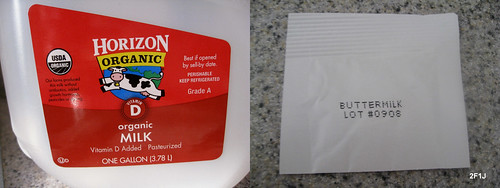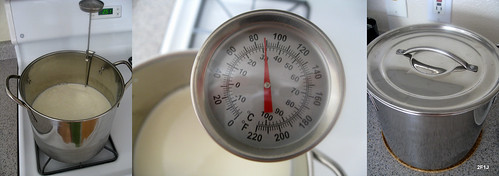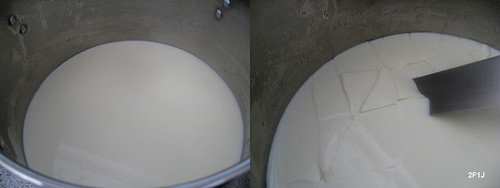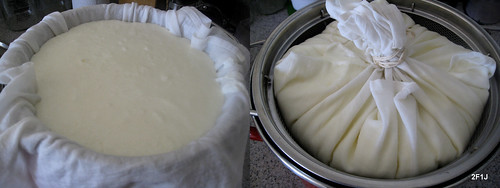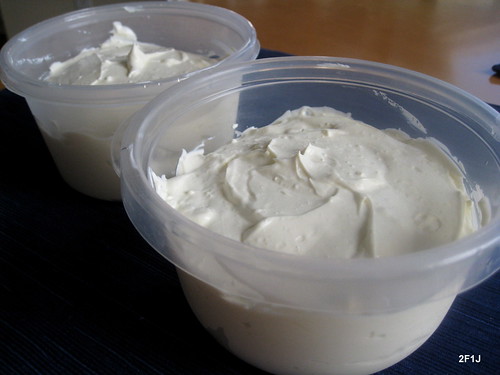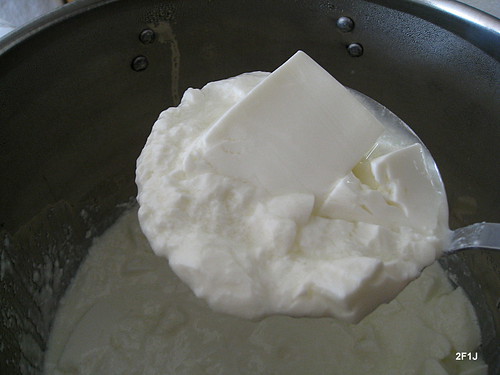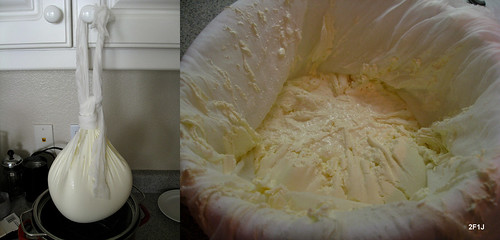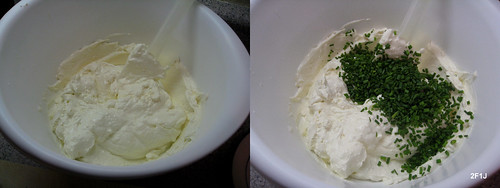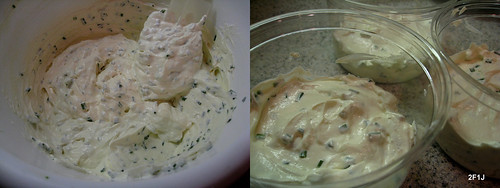When people ask is if there is any specific type of food that we miss from Germany by living in the States we usually tell them that we can get almost everything here in California. And even a lot more as we love the variety of different ethnic food markets and also the abundance of local fruits and vegetables. But there is one staple in German cuisine that is hard to find here, and even when found in specialty stores and now even at Whole Foods, its quality is lacking and it is sold way overpriced: a soft cheese called “Quark”.
Quark is similar to other soft cheeses such as Fromage Blanc in that it is a white, unripened cheese. It is made without rennet and can have a variety of consistencies ranging from yogurt to dry ricotta, depending on how long the curds are allowed to drain during its preparation. Similar to Fromage Blanc, plain Quark has a much lower fat content than cream cheeses. In Germany, Quark can be bought in three different varieties: Magerquark (low fat Quark) is prepared from low fat milk, Quark is made with whole milk, and Sahnequark (cream Quark) is Quark mixed with heavy cream (4 to 1 ratio). Quark is commonly used as a breakfast spread (Quark topped with jam on a fresh oven-baked roll is a breakfast classic), for baking (e.g. in doughs or cheesecakes), and in a large variety of Quark desserts, mostly with fresh fruits.
Since we have recently started to venture into cheesemaking at home, we were highly motivated to try making our first Homemade Quark.
Before you get started, one reminder about cheesemaking: make sure to sterilize all your equipment before use, we typically rinse everything with hot water.
Pour whole milk into large cooking pot equipped with a thermometer. Slowly heat milk to 32 °C (88 °F). Remove pot from cooking stove and add 1 packet of direct set buttermilk starter. Gently mix in the starter with a cooking ladle in an up and down motion. Then cover the pot and let it sit at room temperature for 24 hours.
Sterilize butter muslin in boiling water for 5 minutes, then place it into a colander on top of another pot for draining the curds.
Cut curds with a cheese knife into large cubicles, this will help with better draining.
Transfer curds into the butter-muslin lined colander. Tie ends of butter muslin into a knot and let the curds drain for 12-24 hours, depending on the desired consistency. We have found that it works very well for us if we cover the pot again and place it into a refrigerator to allow draining for 24 hours. This way we can also prepare Quark during weekdays when we are not home during the day.
After draining you can adjust the consistency of your Quark by adding back in some of the whey, or by adding some heavy cream for a creamier taste.
Transfer quark into smaller containers for storage. We have found that it will be good for at least a week. We were very happy how our first homemade Quark turned out – although the complete process takes about two days, the actual work amount is rather minimal – and we were delighted that its taste was up to par, and probably better due to its freshness, than Quark we could buy back in Germany.
Recipe adapted from “Home Cheesemaking” by Ricki Carroll
3.8 L (1 Gallon) pasteurized milk
1 packet direct-set buttermilk starter (New England Cheesemaking Supply Company)
Heavy cream
Makes about 1.2 kg (2.6 pounds) of Quark

